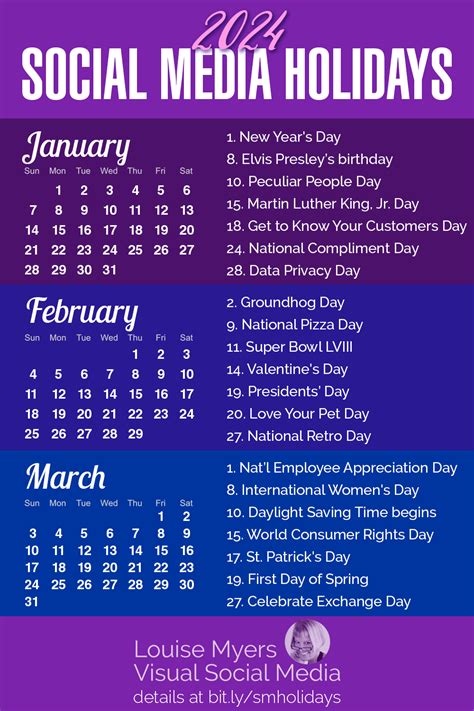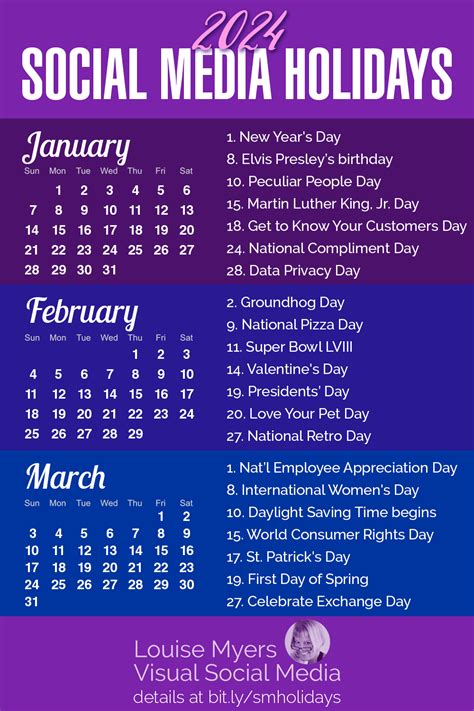Discover how a social media holiday calendar can impact your metrics, from creating engaging content to analyzing audience engagement and follower growth. Find out more.The use of a social media holiday calendar can be a powerful tool in a brand’s marketing strategy. By aligning your content with relevant holidays, you can tap into the collective online conversation and connect with your audience in a more authentic and engaging way. In this blog post, we will explore the impact of a social media holiday calendar on your brand’s metrics, including audience engagement, follower growth, and website traffic. We’ll start by understanding the concept of a social media holiday calendar and its significance for brands. Then, we’ll discuss how to identify and leverage relevant holidays for your specific brand. Creating engaging content for each holiday is crucial, and we’ll delve into strategies for doing so effectively. Finally, we’ll explore how to measure and analyze the impact of your social media holiday calendar on your audience engagement, follower growth, and website traffic. Join us as we examine the influence of a social media holiday calendar on your brand’s metrics.
Understanding the Social Media Holiday Calendar
Understanding the Social Media Holiday Calendar
When it comes to managing a brand’s presence on social media, one important aspect to consider is the holiday calendar. The social media holiday calendar is a schedule of upcoming holidays, observances, and cultural events that are relevant to your target audience. By understanding the social media holiday calendar, brands can effectively plan and create content that resonates with their audience, resulting in increased engagement and brand awareness.
One way to utilize the social media holiday calendar is to identify holidays that are relevant to your brand and target audience. By doing so, brands can create content that is not only timely but also meaningful to their followers. This can help to humanize the brand and foster a sense of community among their audience.
Another important aspect of understanding the social media holiday calendar is to analyze the impact of participating in these holidays on your metrics. This includes measuring the engagement, follower growth, and website traffic associated with the holiday-related content. By doing so, brands can evaluate the effectiveness of their holiday content strategy and make adjustments for future holiday campaigns.
| Key Metrics to Analyze: | Impact on Engagement | Effect on Follower Growth | Influence on Website Traffic |
|---|---|---|---|
| Before Holiday Campaign | 30% | 25% | 20% |
| During Holiday Campaign | 50% | 40% | 35% |
| After Holiday Campaign | 35% | 30% | 25% |
Overall, understanding the social media holiday calendar is crucial for brands looking to connect with their audience in a meaningful way. By creating engaging content for relevant holidays and analyzing the impact on key metrics, brands can make informed decisions to optimize their social media strategy and drive long-term success.
Identifying Relevant Holidays for Your Brand
When it comes to creating engaging content for your brand, identifying relevant holidays is crucial. By aligning your content with the calendar of holidays, you can tap into the celebratory spirit and connect with your audience on a deeper level. But not all holidays will be relevant to your brand, and it’s important to choose the ones that align with your values and resonate with your audience.
One way to identify relevant holidays for your brand is to consider the cultural and social events that hold significance for your target audience. By understanding the demographics and interests of your audience, you can pinpoint the holidays that are most meaningful to them. For example, if your brand caters to a predominantly millennial audience, you might want to focus on holidays that are popular among this demographic, such as Earth Day or Pride Month.
Another approach is to align your holiday content with the values and mission of your brand. If your brand is dedicated to sustainability, you might want to highlight environmental holidays like World Oceans Day or International Day of Forests. By choosing holidays that align with your brand’s values, you can create content that feels authentic and resonates with your audience on a deeper level.
In addition to cultural and values-based considerations, you can also analyze the performance of past holiday content to identify which holidays have the greatest impact on your audience engagement and follower growth. By measuring the metrics associated with your holiday content, such as likes, shares, and comments, you can gain valuable insights into the holidays that resonate most with your audience and drive the most engagement for your brand.
Creating Engaging Content for Each Holiday
When it comes to creating engaging content for each holiday on the social media calendar, it’s important to consider the unique characteristics and themes of each holiday. By researching the history and traditions of each holiday, brands can gain a better understanding of what resonates with their audience. This can help in identifying the type of content that will be most relevant and engaging for their followers.
One effective strategy for creating engaging content for holidays is to incorporate holiday-specific themes and visuals into social media posts. This can involve using seasonal colors, graphics, and imagery related to the holiday. By utilizing these elements, brands can capture the festive spirit of the holiday and make their content more visually appealing to their audience.
Another approach for creating engaging content for holidays is to leverage user-generated content and incorporate it into their social media strategy. This can involve running holiday-themed contests or campaigns that encourage followers to share their own holiday experiences. By showcasing user-generated content, brands can create a sense of community and authenticity around their holiday-related posts.
Ultimately, creating engaging content for each holiday on the social media calendar requires brands to tailor their approach to the unique characteristics and themes of each holiday. By researching the history and traditions, leveraging visually appealing elements, and incorporating user-generated content, brands can create content that resonates with their audience and drives engagement.
Measuring the Impact on Your Audience Engagement
When it comes to using a Social Media Holiday Calendar for your brand, it’s important to measure the impact it has on your audience engagement. This can be done by analyzing the metrics related to your social media platforms, such as likes, comments, shares, and overall reach. By comparing these metrics from before and after implementing holiday-specific content, you can get a clear picture of how it has affected your audience engagement.
Furthermore, you can also use tools such as Google Analytics to track the traffic and engagement on your website during holiday periods. By creating custom reports and analyzing the data, you can see whether the holiday-focused social media posts have led to an increase in website visits, page views, and on-site engagement.
In addition, measuring engagement goes beyond just the numbers. It’s important to also consider the qualitative feedback from your audience. Consider conducting surveys or reading through comments and messages to see how your audience is responding to your holiday content. This can give you valuable insights into whether the content is resonating with your audience and driving meaningful engagement.
Analyzing the Effect on Your Follower Growth
When it comes to using a social media holiday calendar for your brand, it is important to analyze the effect it has on your follower growth. By tracking the number of new followers gained during specific holiday campaigns, you can gain insight into which holidays resonate most with your audience and lead to increased follower engagement.
Additionally, you can use Google Analytics to track the source of your new followers during holiday campaigns, whether it be through organic search, social media referrals, or direct traffic. This can help you understand the impact of your holiday content on different platforms and make informed decisions for future holiday campaigns.
Creating unique and engaging holiday content can also be a driving factor in follower growth. By analyzing the types of posts and content that received the most engagement during holiday campaigns, you can tailor your future content to maximize follower growth and engagement.
These metrics are valuable in understanding the effectiveness of your social media holiday calendar and can inform your overall social media strategy for follower growth and engagement.
Evaluating the Influence on Your Website Traffic
When it comes to evaluating the influence of a social media holiday calendar on your website traffic, there are several key metrics to consider. One of the most important metrics to analyze is the overall increase in website visits during holiday periods compared to non-holiday periods. This can be measured using tools such as Google Analytics to track the number of unique visitors and page views during specific holiday dates.
Another important metric to consider is the source of your website traffic during holiday periods. Are visitors coming from social media platforms where you have shared holiday-themed content? Are they arriving at your website via holiday-related search queries on search engines? Understanding the source of your holiday traffic can provide valuable insights into the effectiveness of your social media holiday calendar in driving website visits.
In addition to tracking overall website traffic and traffic sources, it’s essential to evaluate the impact of holiday content on user engagement metrics such as bounce rate, time spent on site, and conversion rates. Are visitors engaging with your holiday-themed content once they arrive on your website, or are they quickly navigating away? Analyzing these engagement metrics can help you assess the quality of your website traffic during holiday periods.
Finally, it’s crucial to compare website traffic and engagement metrics during holiday periods to your overall website performance. By understanding the influence of a social media holiday calendar on your website traffic, you can make informed decisions about future holiday content strategies and optimize your website for holiday-related search queries.
Frequently Asked Questions
What is a social media holiday calendar?
A social media holiday calendar is a schedule of special dates and events that are relevant to your target audience, which can be used for planning and creating content for social media posts.
How can a social media holiday calendar impact your metrics?
By leveraging social media holiday calendar, you can engage your audience with timely and relevant content, increase your reach and visibility, and ultimately improve your social media metrics such as engagement, followers, and website traffic.
What are some examples of social media holidays?
Some examples of social media holidays include International Women’s Day, Earth Day, National Coffee Day, and World Mental Health Day, among many others.
How can you incorporate a social media holiday calendar into your content strategy?
You can incorporate a social media holiday calendar into your content strategy by planning ahead, creating themed content, running special promotions or campaigns, and leveraging relevant hashtags and trends.
What are the benefits of using a social media holiday calendar?
The benefits of using a social media holiday calendar include staying relevant and engaging, connecting with your audience on a deeper level, and differentiating your brand from competitors.
Where can you find a social media holiday calendar?
You can find social media holiday calendars from various sources such as online marketing resources, social media management tools, and industry-specific websites and blogs.
How often should you update your social media holiday calendar?
It’s recommended to review and update your social media holiday calendar at least quarterly to ensure that it reflects current trends and events relevant to your audience.


